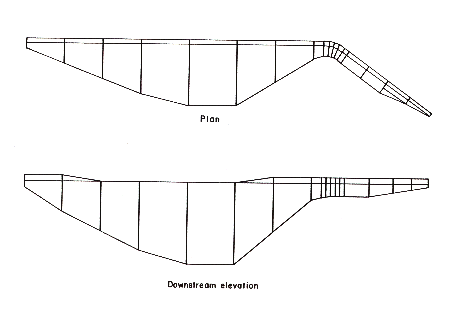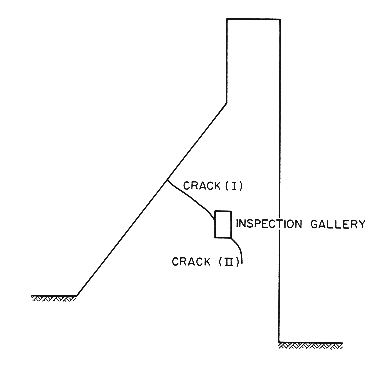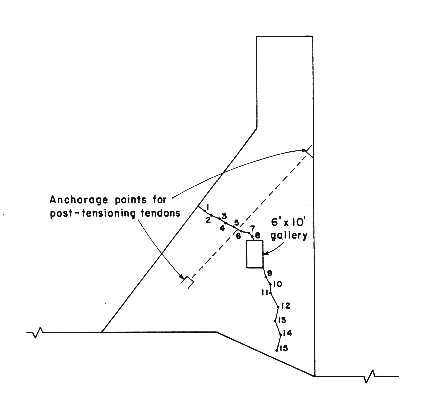Fontana Problem
|
- Patterned cracking was first observed in 1949 as the upstream movement
began.
- Next cracking was observed in the walls of the foundation at the drainage
gallery in the curved portion of the dam in 1972. Two hypotheses were
developed: (1)the foundation was deficient under the curved portion of the
dam or (2) the main portion of the dam was expanding due to heat and/or
other causes and this was pushing on curved portion so that it began to
bend.
|
 |
The crack growth was monitored; in 1973 the crack was opening.
Authorities suspected solar heat as the
culprit.
Two-dimensional analyses were performed to
determine the causes of cracking. The analyses confirmed that the foundation
was not the problem; the rest of the dam was expanding and causing cracking in
the curved portion.
|
 |
A petrographic exam revealed an alkali-aggregate reaction --
a chemical reaction was occurring between the
cement and the aggregate components of the concrete.
The chemical reaction and the heat had caused the
cracking near the curved portion of the dam. Cracking in the main part of the
dam was resisted by the foundation.
Temporary solutions included
spraying cold water on the downstream face to lower the temperature; crack
opening diminished as a result.
Also, the area around the crack was
post-tensioned, which means steel wire was stretched across the area and
attached on either side. Then the steel wire contracts and pulls the crack
closed.
|
 |
More permanent solutions:
grouting the crack
(filling it with a cement-like material)
cutting expansion slots across
the upper portion of the dam.
More computer analyses were used to determine how many expansion slots and
their positioning; results suggested cutting one slot.
A slot was cut in 1976. It was almost closed by 1983.
The slot was recut in 1983.


|


